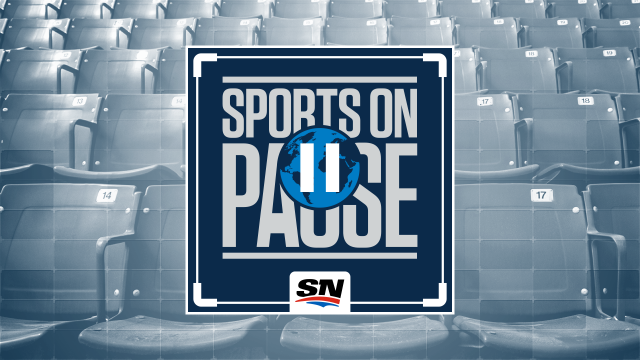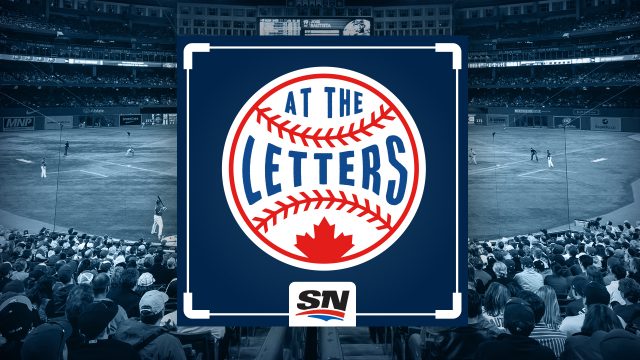
TORONTO – There’s no universal timeline for mourning and everyone processes loss in their own way, but at this point of the COVID-19 pandemic it sure feels like we’ve arrived at the fifth and final stage of the Kübler-Ross grief model – acceptance.
Over the past 10 weeks, there’s by and large been denial (“we don’t need to worry about the coronavirus”), anger (“this is nuts” or, if in the U.S., “this is tyranny, give me my freedom back”), bargaining (“if only we’d acted sooner”) and depression (“the lockdown will go on forever”).
Some of us may still be stuck somewhere along that progression, but as the continent gradually reopens, there’s a lot for us to come to terms with as we reimagine and relearn our world.
Keep that in mind as you consider the first set of health and safety protocols proposed by Major League Baseball to its players, as first revealed by The Athletic over the weekend. At first glance, the 67-page document seems excessively onerous, even draconian, in the way it curtails even the most mundane of interactions.
Like, throwing a ball around the horn is discouraged. Really.
Yet here we are, the protocol serving as both a starting point toward a potential return to play and an acceptance that with the coronavirus in our midst, the old normal is gone, and many unthinkable accommodations must be made.
“This is the new world and we either cower in our basements or we try to figure out how to safely go about our business and make sure we stay out of harm’s way to have some kind of life,” says Dr. Glenn Copeland, who among the many hats he wears has been a consulting physician with the Toronto Blue Jays since 1979. “People think this is a temporary thing. I’ve got bad news. It’s not temporary. … But you don’t want the next 12-18 months to be like the last eight-10 weeks where you never leave the house, you go nowhere and you see nobody.”
Definitely not, and to that end, Copeland has spent much of the past two and a half months developing ways for the sports world to mitigate the risks of infection in his role as medical director of the Canadian Football League’s Ottawa Redblacks, and as an advisor to QuestCap Inc., a Canadian investment company focused on social impact.
The CFL, says Copeland, “has asked myself and the Redblacks to strike a committee to advise them on how we can safely get the league back and up and running.” He’s also spoken with 20 MLB, NHL and NBA teams about building return-to-play standards, and had discussions with Jon Coyles, MLB’s vice-president of drug, health and safety programs who helped write baseball’s protocol.
While he emphasizes that “absolutely nobody has said it’s perfectly safe,” Copeland believes that sports leagues can “lower the risk down to such a small number that we can do a few things.”
“Number one is catch any COVID coming through,” he continues. “Then, get them away from the herd, put them in quarantine and stop the spread, which is the key. The guy goes off into quarantine, gets the medical care he needs through public health, and then get him back on the field.”
Baseball’s system, like the one Copeland and QuestCap are offering (initially launching with the Colombian Professional Soccer League), hinges on a stringent testing and screening program before players even set foot in the clubhouse. The MLB proposal envisions 10,000 tests a week along with a regimen of self-checks as a means of preventing an infected player, coach or staff member from ever getting into the clubhouse, and the onus will be on everyone to behave responsibly away from the ballpark.
Still, inadvertent transmission even for someone following the key public health instructions of physical distancing, frequent handwashing and keeping hands away from the face is very possible, which is why the progressions in testing are crucial.
The initial MLB proposal calls for testing primarily through saliva collections, with occasional oral or nasal swabs. During an appearance on CNN last week, commissioner Rob Manfred said baseball had made an investment in the Sports Medicine Research and Testing Laboratory in Salt Lake City to ensure a 24-hour turnaround on polymerase chain reaction, or PCR, tests.
PCR testing, which searches for the virus’ RNA, is the most commonly used technique for COVID-19 but typically carries a longer turnaround time.
The United States recently approved an antigen test which identifies proteins of the virus from nasal cavity swabs and produces results in 15 minutes. At issue is how sensitive the test is and whether it identifies an infection early enough in the process.
A third technique, serological testing, searches a blood sample for two types of antibodies, an early marker known as IgM that appears before symptoms, and a late marker known as IgG, which shows that someone has had and overcome infection.
Last month, the Food and Drug Administration in the U.S. said such tests weren’t approved for diagnostics, but there are some currently awaiting approval.
Better tests mean better screening, which in the absence of a vaccine, is the goal now for every business, sports leagues included, that reopen.
Those improvements are coming.
In the interim, everyone needs to reframe their tolerance for risk in a pandemic world, because simply staying closed indefinitely isn’t going to work. With the appropriate physical distancing, strong hand hygiene and disciplined responsibility, the risk can be lowered enough to be tolerable.
Everyone needs to do their part, though.
“People want some magic,” said Copeland. “If I said, ‘I got a pill here, that will guarantee you 99 per cent that you’re not going to get the virus, but the pill costs $500,’ I’d have millions of people willing to send me the $500. I’ll give you the advice for free. Keep your hands away from your face, completely. Wash your hands. Wear a mask. And stay six feet away from everybody. That’s our lecture.
“It’s not going to be the old normal. You’re not going into a bar and restaurant right now where you’re going to have a couple hundred people. Those days are done. If you’re in a store and it looks too crowded, walk out. Be smart. These are things we have to bring into our new world.”
So keep mourning if you must. Work through any lingering denial, anger, bargaining and depression. But for baseball and other sports to resume, for life to really begin again, acceptance is the only path forward.






